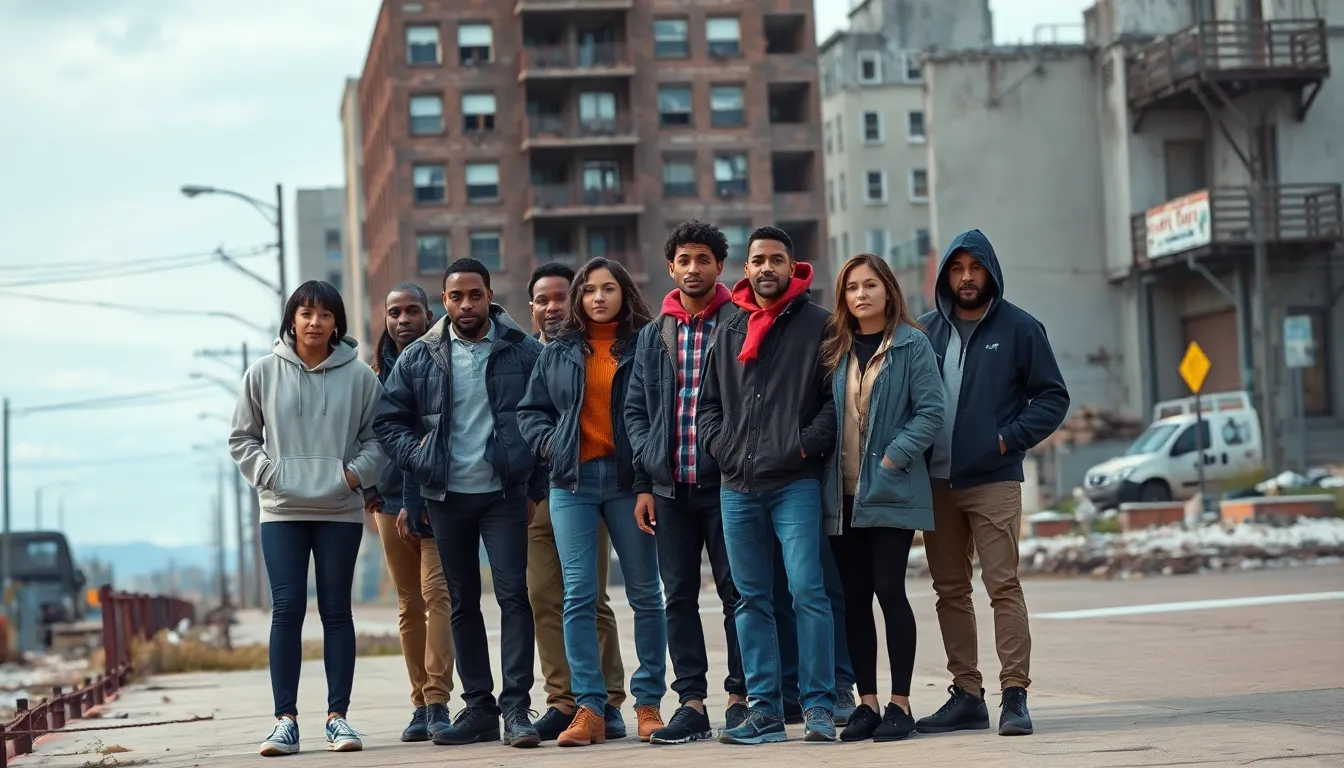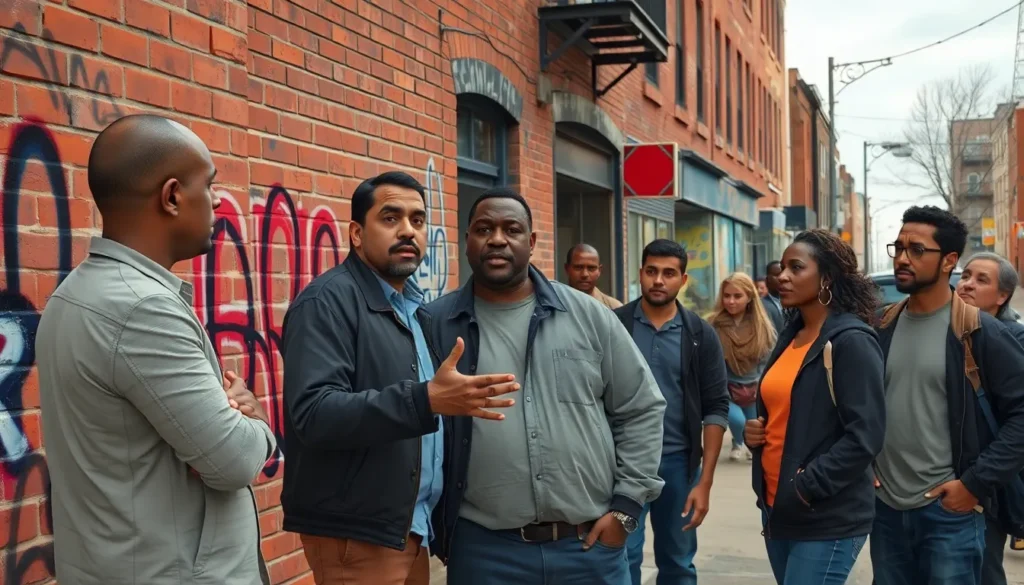Table of Contents
ToggleWhen it comes to crime, some cities seem to have a knack for attracting trouble like moths to a flame. If you’ve ever wondered where the wildest crime stories come from, look no further. Buckle up as we dive into the not-so-glamorous world of America’s worst crime cities. Spoiler alert: it’s not a vacation destination.
Overview of Crime Rates in America
Crime rates in America vary widely by region and city. Analysts often use data from the FBI’s Uniform Crime Reporting (UCR) Program to evaluate these rates. Urban areas tend to experience higher crime levels compared to rural settings.
Recent statistics reveal that cities like Detroit, St. Louis, and New Orleans frequently top crime lists. These locations report elevated rates of violent crimes, including homicide, robbery, and aggravated assault. According to the latest data, St. Louis has a violent crime rate of 1,057 incidents per 100,000 residents, making it one of the most dangerous cities in the United States.
Factors contributing to these high rates include socioeconomic challenges, lack of education, and unemployment rates. Areas with significant poverty often show increased gang activity and drug-related crimes. Law enforcement efforts can impact crime rates; cities with community policing initiatives sometimes exhibit decreased violent crime rates.
Looking at property crimes, cities like Memphis and Baltimore also report alarming numbers. The property crime rate in Memphis stands at approximately 4,748 per 100,000 residents. Neighborhoods grappling with high poverty rates often experience increased theft and burglary incidents.
Public perception plays a role in how crime rates influence community safety. Residents in heavily affected areas frequently express concern about crime. These concerns can impact their quality of life, influencing decisions about safety and community involvement.
Understanding crime rates in America requires a thorough examination of various factors. Recognizing the complexity of these issues is essential for implementing effective strategies to reduce crime.
Factors Contributing to High Crime Rates

High crime rates in many American cities stem from a combination of factors. Understanding these elements provides insight into why certain areas struggle with safety.
Economic Inequality
Economic inequality plays a significant role in escalating crime rates. Areas with stark income disparities often see higher levels of poverty, which contribute to increased criminal activity. In cities like Detroit, the financial divide has led to desperation and, in some cases, a reliance on illegal means for survival. Residents trapped in low-income environments frequently face barriers that limit opportunities for advancement. Such conditions can foster resentment and lead to crime as a means to access resources that are otherwise unattainable.
Education and Employment Opportunities
Access to quality education and employment opportunities influences crime rates prominently. Cities with underfunded schools often produce graduates who lack essential skills. St. Louis, for example, experiences high crime rates partly due to a significant number of residents facing unemployment or low-wage jobs. When individuals cannot secure stable employment, they may turn to crime as an alternative. Creating pathways for education and job training can significantly impact crime reduction efforts in these communities.
Law Enforcement Challenges
Effective law enforcement hinges on community trust and resources. In many high-crime cities, strained relationships between residents and police hinder efforts to combat crime. The challenges law enforcement faces include inadequate funding and overwhelming workloads, leading to slower response times and less proactive policing. These factors create an environment where crime can thrive. Enhancing community engagement and increasing police funding can improve relationships, leading to safer neighborhoods.
Top 10 Worst Crime Cities in America
Certain cities in America struggle with high crime rates, often marked by violent and property crimes. Understanding the statistics and factors behind these issues reveals a troubling landscape for many communities.
City 1: Overview and Statistics
Detroit ranks as one of the most dangerous cities in America, with a violent crime rate of 1,965 incidents per 100,000 residents. Property crime also presents challenges, showcasing a rate of 4,348 incidents per 100,000 residents. Economic downturns, high unemployment, and a lack of access to quality education contribute significantly to Detroit’s crime issues.
City 2: Overview and Statistics
St. Louis stands out with a violent crime rate of 1,057 incidents per 100,000 residents. It’s notorious for high rates of homicide and robbery, with many neighborhoods facing significant challenges. Socioeconomic factors, such as poverty and limited job opportunities, exacerbate criminal behavior in the area.
City 3: Overview and Statistics
New Orleans features a violent crime rate of 1,102 incidents per 100,000 residents, making it a hotspot for crime. This city also shows distressing property crime statistics, including 5,195 incidents per 100,000 residents. The combination of poverty, drug-related issues, and a struggling educational system amplifies crime in New Orleans.
City 4: Overview and Statistics
Baltimore displays a violent crime rate of 1,748 incidents per 100,000 residents, placing it among the most dangerous in the country. Property crime remains high as well, with a rate of 5,123 incidents per 100,000 residents. Economic disparities and strained police-community relations are key challenges faced by residents.
City 5: Overview and Statistics
Memphis records a violent crime rate of 1,327 incidents per 100,000 residents, reflecting a significant ongoing issue. The property crime rate is notable at 5,740 incidents per 100,000 residents. Contributing factors include high poverty rates and a lack of sustainable employment opportunities.
City 6: Overview and Statistics
Cleveland shows a violent crime rate of 1,172 incidents per 100,000 residents, indicating serious safety concerns. Property crime rates are alarming at 5,196 incidents per 100,000 residents. The city grapples with economic challenges and systemic issues that prolong its crime problems.
City 7: Overview and Statistics
Kansas City has a violent crime rate of 1,247 incidents per 100,000 residents, which alarms community leaders and residents alike. Its property crime figures are high as well, with 4,959 incidents per 100,000 residents. Factors such as poverty and inadequate social services create an environment conducive to crime.
City 8: Overview and Statistics
Oakland, with a violent crime rate of 1,190 incidents per 100,000 residents, faces considerable challenges. Property crime is particularly troubling, at 5,920 incidents per 100,000 residents. Contributing elements include socioeconomic disparities and varying levels of police effectiveness.
City 9: Overview and Statistics
Indianapolis reveals a violent crime rate of 1,154 incidents per 100,000 residents, highlighting ongoing public safety issues. Property crime numbers, reaching 3,672 incidents per 100,000 residents, also raise concerns. Factors such as unemployment and education gaps fuel criminal activity in this city.
City 10: Overview and Statistics
Philadelphia records a violent crime rate of 1,027 incidents per 100,000 residents, marking it as one of the cities struggling with crime. Property crime rates are significant, at 4,508 incidents per 100,000 residents. The interplay between economic hardship and crime remains an ongoing challenge for city officials and residents alike.
Impacts of High Crime Rates
High crime rates adversely affect cities, shaping the lives of residents and influencing their overall wellbeing. Understanding these impacts requires a closer look at community safety and economic consequences.
Effects on Community Safety
A significant concern arises from high crime rates, leading to heightened fear among residents. Safety perceptions shift, leading to reduced community engagement. Residents often limit outdoor activities and interactions, fostering a culture of isolation. Increased security measures, such as alarms and surveillance systems, become common as individuals seek reassurance in their homes. The psychological toll manifests through stress and anxiety, diminishing quality of life. Trust in local law enforcement declines, complicating communication and cooperation with police. Areas with chronic crime issues often see reduced investment in community programs, further perpetuating a cycle of fear and disengagement.
Economic Consequences
Crime significantly impacts local economies, deterring businesses from establishing themselves in high-crime areas. Reduced foot traffic and customer trust lead to lower sales for existing businesses. Property values depreciate, creating financial burdens for homeowners and investors. Insurance costs typically rise, straining already limited budgets for residents. Economic disparities widen as job opportunities dwindle in unsafe neighborhoods, pushing individuals toward illegal activities for survival. Crime’s financial toll extends to law enforcement and emergency services, consuming resources that might otherwise support community investments. Struggling communities face challenges that hinder growth and development, exacerbating social and economic inequalities.
The landscape of crime in America reveals a troubling reality for certain cities. With high rates of violent and property crimes these areas face significant challenges that impact residents’ safety and quality of life. Socioeconomic factors play a crucial role in perpetuating these issues making it essential to address underlying causes like poverty and unemployment.
Efforts to improve community safety must focus on fostering better relationships between law enforcement and residents while investing in education and economic opportunities. By understanding the complexities of crime in these cities stakeholders can work towards creating safer environments and enhancing community well-being. The path to improvement is challenging but necessary for the future of these communities.







